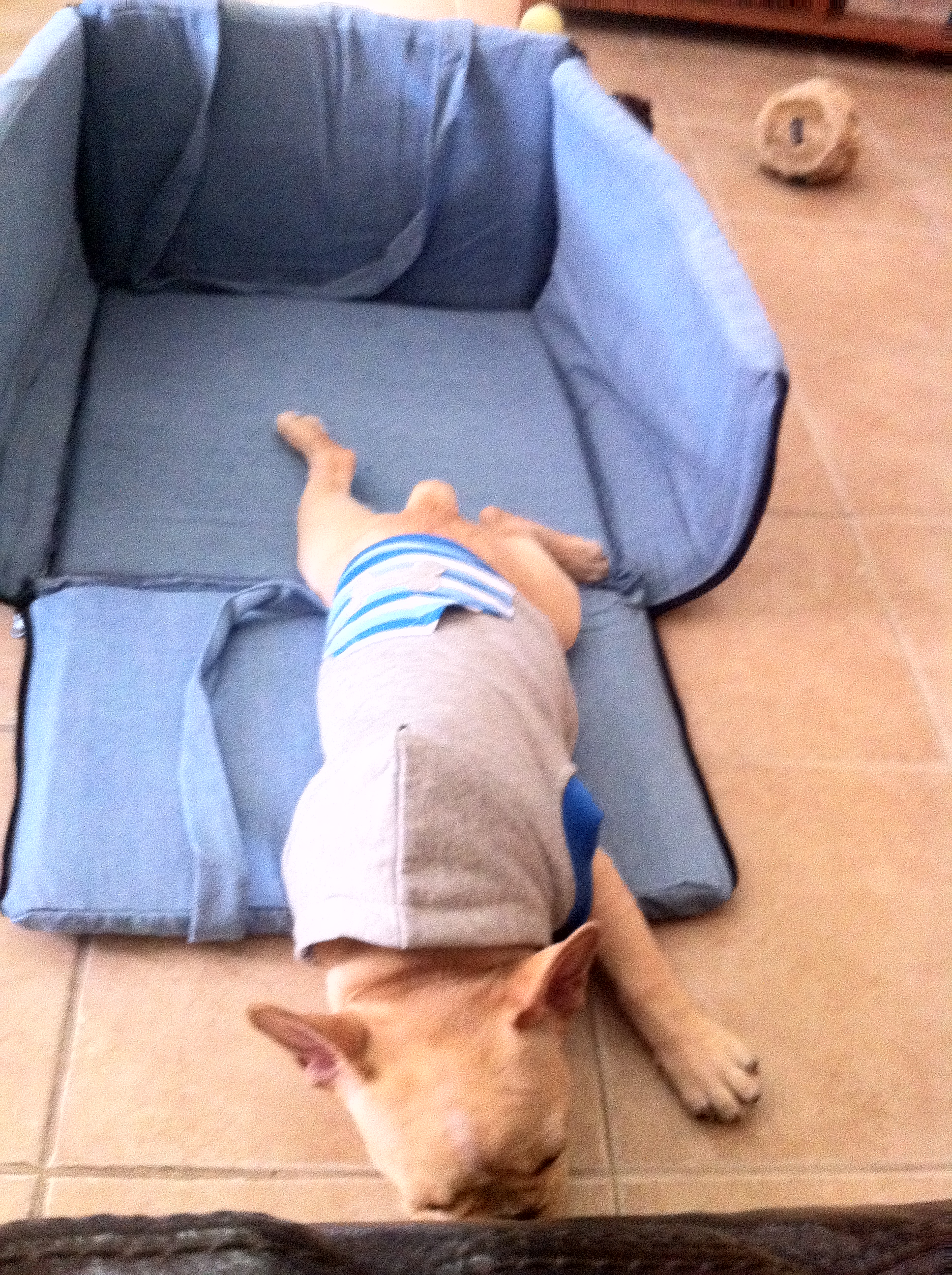French Bulldog Food Allergies
Allergies in French Bulldogs
There are many dogs that suffer from different forms of allergies. French Bulldogs appear to have a predisposition as many of them have some form of allergies. The following article will outline the different types of allergies and their treatment options.
Overview:
The most common types of allergies in dogs and particularly French Bulldogs include atopy (environmental/seasonal allergy), food allergy and flea allergy dermatitis. In all cases of allergy, it begins with the exposure of an antigen, and if the dog’s immune system “over-reacts” to that particular antigen the allergic response will ensue. Examples of antigens may include pollen from weeds and trees, grass, dust, food (eg. beef, lamb, dairy, fish, wheat, etc.) and insects (eg. fleas).
Symptoms:
Many people believe that dogs with this type of allergy will have symptoms similar to people such as itchy water eyes, running nose, sneezing and itchy palate. While a small percentage (5-10%) of dogs will exhibit these symptoms, in cases of environmental allergy and food allergy, the predominate symptom is pruritus (itchiness). The location of pruritus is very important, as dogs with allergy will often itch their face, feet and ears by licking, rubbing or chewing. It is not uncommon for these dogs to also itch their groin, around the anal and axillary regions (armpits).
As mentioned previously, some dogs with allergy have symptoms involving their upper respiratory tract. French Bulldogs with narrowed nostrils and elongated soft palate will often have these symptoms exacerbated.
Dogs that have Flea Allergy Dermatitis (FAD) will often present with a distinct rash on their back, near their tail. It is important to note that FAD is a disease of flea allergy rather than flea infestation but often the two go hand in hand. In dogs that are predisposed, it may take as little as one flea bite to cause this very aggressive dermatitis.
In all cases of allergy, if severe, the development of secondary bacterial or fungal infection may be present. In case of infection, you’ll often notice small red “bumps” or pustules, scabbing lesions and even a foul odor emitting from the skin or ears. There are many dogs that have chronic ear infections as the only symptom of allergy. Therefore in order to successfully manage these chronic ear infections, the underlying cause of allergy must be addressed.
Diagnosis:
While there are blood and intradermal allergy testing available, a tentative diagnosis of allergy is made based on a thorough history, breed, age in which symptoms are first noted and location(s) in which the dog is itchy. Therefore it is important to reveal as much information to your veterinarian as possible to achieve an accurate diagnosis. Many veterinarians will have a form or checklist that they will have their clients complete before the appointment.
Diagnosing food allergy is challenging, as blood testing can be very inaccurate and misleading. The best way to diagnose a food allergy is to feed a hypoallergenic diet for 8 weeks and if there is at least a 70% reduction of itching, a diagnosis of food allergy can be made. It is extremely important that your dog does not consume anything but the prescribed diet, approved treats and water. Do not feed your dog flavored medications during the dietary trial as this may interfere with the interpretation of the responses from the diet change.
Diagnosis of Flea Allergy Dermatitis is based on physical exam findings and client history. Often, but definitely not always, fleas are visibly present.
Treatment:
After determining that your dog has an allergy and specifically the type of allergy, it is important to begin therapy. Therapy for environmental allergy may include anti-histamines, corticosteroids, immunosuppressants, omega fatty acids, shampoo therapy and hyposensitization (“allergy shots”). As antigens/allergens may be absorbed through the skin, a first line of therapy that dog owners may perform at home is a cool water bath. This does not only to help reduce the itch, but also to wash away any allergens that may be present on the skin.
Treatment for food allergy involves feeding a food that does not contain the offending antigen. Many veterinarians will recommend either a dietary elimination diet in which the diet contains ingredients that are less likely to cause allergy or a hydrolyzed diet where the ingredients are hydrolyzed, making them invisible to the immune system.
Summary
There are 3 common types of allergies that may affect French Bulldogs and are: Atopy (environmental/seasonal allergy), Flea Allergy Dermatitis (FAD) and Food Allergy. All three types of allergy will often cause your dog to be itchy. As diagnosing allergy can be challenging in some cases, it is extremely important to provide a thorough history to your veterinarian as this, as well as physical examination findings will be made to make a diagnosis and develop a successful treatment plan.


Recent Comments